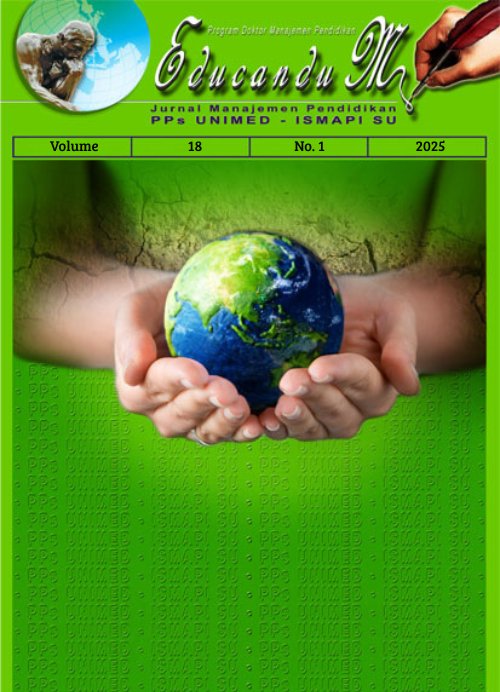Perbandingan Pendekatan Saintifik Dengan Pendekatan Deep Learning Pada Pembelajaran Matematika
Abstract
This study aims to compare the scientific approach and deep learning approach in learning mathematics. Mathematics learning is a crucial aspect of education that develops the ability to think logically, analytically and creatively, but many students still face difficulties in understanding and applying mathematical concepts. The scientific approach, which emphasizes the scientific process through observation, hypothesis, experimentation and data analysis, has been popular and effective in improving deep understanding and critical thinking skills. However, this approach tends to focus on procedural processes and requires more time and resources. On the other hand, deep learning approaches, which center on understanding deeper and more complex concepts and developing higher-order thinking skills, including artificial intelligence (AI), are gaining more attention. This research uses a descriptive qualitative method with a literature review to analyze data from various sources. The results show that the scientific approach helps students actively think critically and systematically, while deep learning proves more effective in long-term concept retention and knowledge transfer through personalized, project-based, fun learning, as well as utilizing AI in assessment and question generation. This comparison highlights the strengths and weaknesses of each approach, with the scientific approach focusing on critical thinking and systematic learning.References
Anderson, L. W., & Krathwohl, D. R. (2001). A taxonomy for learning, teaching, and assessing: A revision of Bloom's taxonomy of educational objectives. Allyn & Bacon.
Bruner, J. S. (1960). The process of education. Harvard University Press.
Dewey, J. (1916). Democracy and education. Macmillan.
Freudenthal, H. (1973). Mathematics as an educational task. Reidel Publishing Company.
Kilpatrick, J., Swafford, J., & Findell, B. (2001). Adding it up: Helping children understand math. National Academy Press.
NCTM. (2000). Principles and standards for school mathematics. National Council of Teachers of Mathematics.
PISA. (2018). PISA 2018 Results: What students know and can do. OECD Publishing.
Schoenfeld, A. H. (1992). Learning to think mathematically: Problem solving, metacognition, and sense making in mathematics. In D. A. Grouws (Ed.), Handbook of research on mathematics teaching and learning (pp. 334-370). Macmillan.
Sumuslistiana. PENERAPAN PENDEKATAN SAINTIFIK DALAM MENINGKATKAN HASIL BELAJAR MATEMATIKA PADA SUBPOKOK BAHASAN SKALA. IKIP Widya Darma
Raup, Abdul,dkk. 2022. Deep Learning dan Penerapannya dalam Pembelajaran. JIIP (Jurnal Ilmiah Ilmu Pendidikan), 5(9)
Abnar, S., Orooji, F., & Taghiyareh, F. (2012). An evolutionary algorithm for forming mixed groups of learners in weh based collaborative learning environments. Proceedings 2012 IEEE International Conference on Technology Enhanced Education, https://doi.org/10.1109/ICTEE.2012.6208612 ICTEE 2012
Daryanto, (2014). Pendekatan Pembelajaran Saintifik Kurikulum 2013. Yogyakarta: Gava Media.
Hosnan. (2014). Pendekatan saintifik dan kontekstual dalam pembelajaran abad 21. Bogor: Ghalia Indonesia.
Nurhidayati, D. D. (2016). Peningkatan Pemahaman Manajemen Waktu Melalui Bimbingan Kelompok Dengan Teknik Problem Solving pada Siswa. PSIKOPEDAGOGIA, 5(1), 24-32.
Nurul Mutmainnah,dkk. 2025. IMPLEMENTASI PENDEKATAN DEEP LEARNING TERHADAP PEMBELAJARAN MATEMATIKA DI SEKOLAH DASAR. Pendas : Jurnal Ilmiah Pendidikan Dasar, 10(1)
Kenya,Swawikanti. 2024. Mengenal Deep Learning, Pendekatan Belajar Baru dari Mendikdasmen. Ruangguru.com
Zebua, A., & Mendrofa, N., (2023). Pengaruh pendekatan saintifik pada pembelajaran matematika terhadap kemampuan berpikir matematis siswa di SMP Negeri 1 Hiliduho. Jurnal pendidikan matematika 8(01), 505-518
Published
How to Cite
Issue
Section
License
Copyright (c) 2025 EducanduM

This work is licensed under a Creative Commons Attribution-NonCommercial-ShareAlike 4.0 International License.










